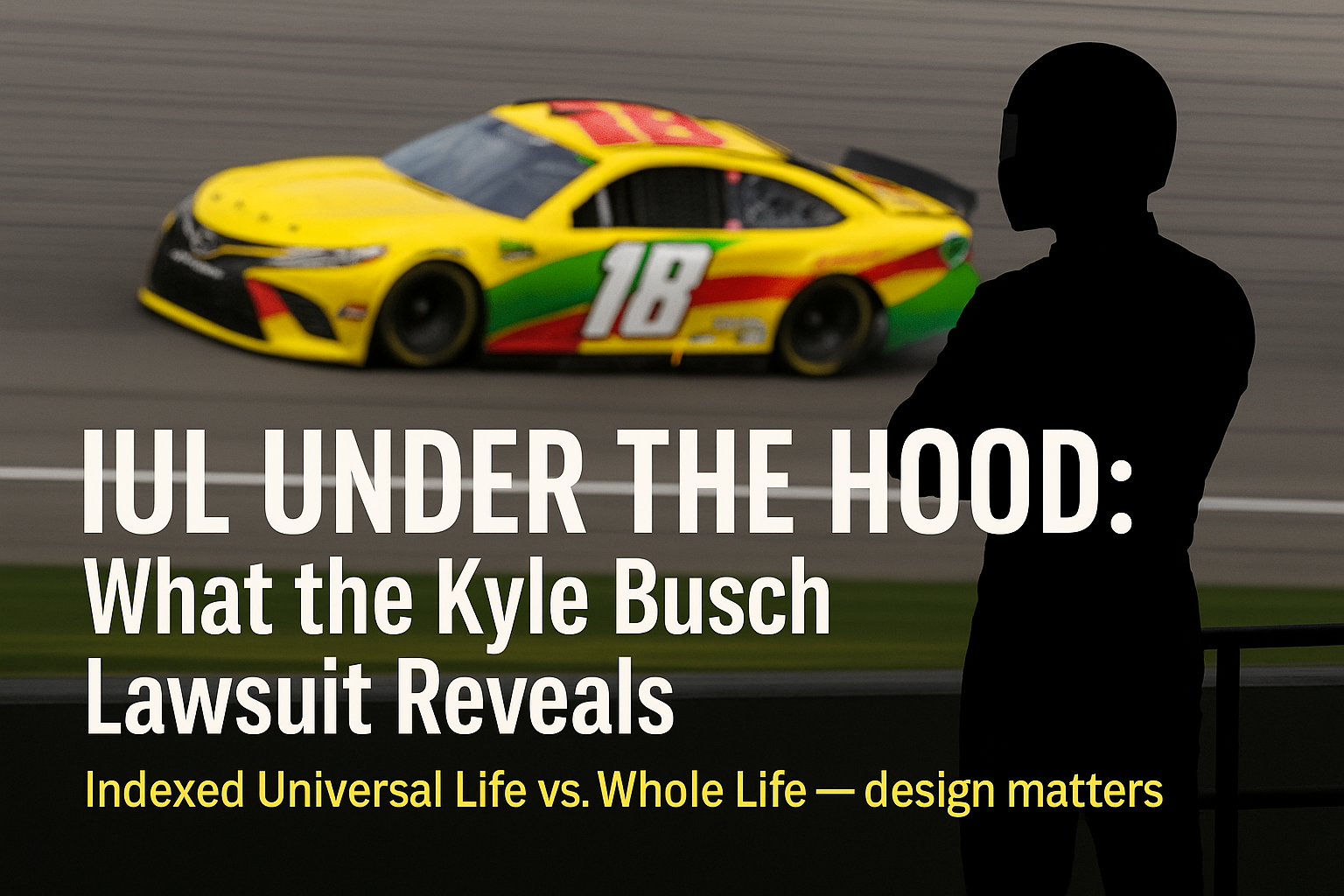The Kyle Busch IUL Lawsuit Explained: What Happened and How to Protect Yourself

You may have seen the recent news about NASCAR champion Kyle Busch and his wife, Samantha, claiming they lost $8.5 million inside an Indexed Universal Life (IUL) policy strategy. When something like this hits headlines, it spreads fast and it can leave people wondering whether IULs are “good,” “bad,” or something to avoid altogether.
Before jumping to conclusions, it’s important to understand what actually happened because the problem wasn’t simply that the policy was an IUL. The core issue appears to be how the policy was designed, illustrated, and communicated.
First, a Quick Clarification
I work with families and business owners to help them control the banking function in their own lives, which is the heart of the Infinite Banking Concept. True Infinite Banking requires:
- Stable, guaranteed growth
- Contractual access to capital
- Predictable costs and performance
- No dependence on market conditions
This is why the Nelson Nash Institute teaches that Infinite Banking is best implemented using dividend-paying whole life insurance from a mutual company because it provides control and certainty.
Now, yes, you can take policy loans and repay them inside an IUL. It can grow. It has cash value.
But because IULs are tied to market index performance and cost-of-insurance adjustments, you cannot fully control the banking function the same way you can with properly structured whole life.
This distinction becomes very important in the Busch situation.
What Went Wrong Here
According to the lawsuit, the Busches were told:
- The policy would become “self-sustaining” after a short period
- It would later generate large tax-free income
- Risk was low
- Costs would not dramatically change
However, the complaint states that the policy:
- Was built with high multipliers and rising internal costs
- Used performance illustrations that were unlikely to hold up in reality
- Was not structured to maximize cash value
- Included a 1035 exchange that triggered significant charges
To quote an industry attorney reviewing the case:
“If the allegations are true, this policy is a case study in how not to design and sell an IUL.”
So Are IULs Automatically Bad?
Not necessarily.
The better answer is: It depends on the purpose and the design.
But we should not lump all “life insurance” into one bucket.
There are major structural differences:
| Whole Life | IUL / UL / VUL |
|---|---|
| Guaranteed, contractual growth | Performance tied to indexes or investments |
| Premium and cost structure is fixed and predictable | Costs can rise over time |
| Designed for stability and control | Designed around market movement and variability |
| Ideal for Infinite Banking | Not built to support banking control long term |
They are not interchangeable tools.
Why Properly Structured Whole Life Avoids These Problems
When whole life is designed for maximum cash value, minimal necessary death benefit, and long-term flexibility, you don’t run into the same deterioration risks that are common in IUL over time.
In my personal experience reviewing policies from new clients over the years:
Less than 10% of the IUL policies I’ve reviewed were on track to sustain themselves long term. The majority showed increasing internal charges that eventually caused the policy to collapse unless the owner injected more premiums later.
This is the opposite of control.
Which is why whole life is the foundation of Infinite Banking – not because it’s “better” emotionally, but because it is more stable structurally.
When you are trying to control the banking function, stability matters more than hypothetical upside.
If You Have an IUL (or Were Recently Shown One)
This situation is your cue to review what you actually own:
- How have cap rates changed historically?
- What triggers cost increases?
- Was your policy designed for your benefit or for commissions?
- Does this structure support control?
Complimentary Policy Clarity Reviews
If you want to know exactly how your policy works, or whether it aligns with your goals, I’m here to help.
A 30-minute conversation can prevent years of unwanted surprises.
-Jason K. Powers
-1024 Wealth


